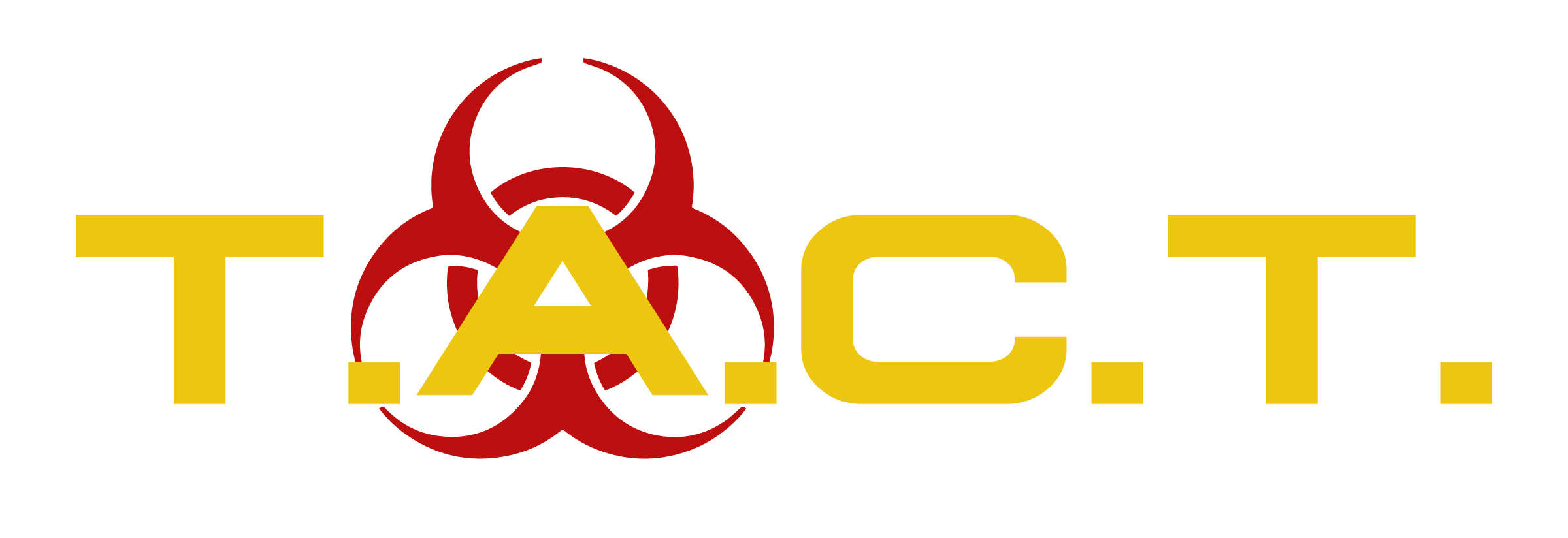Hantavirus Symptoms & Treatment: Complete Prevention Guide

Sore Throat Hantavirus: Understanding Symptoms, Treatment, and Prevention
Hantavirus pulmonary syndrome represents one of the most serious rodent-borne diseases affecting humans, with a mortality rate that can exceed 35%. This potentially fatal viral infection, primarily transmitted through contact with infected deer mice and their waste, demands immediate medical attention and comprehensive understanding for effective prevention.
While hantavirus infections remain relatively rare, their severe nature and rapid progression make awareness crucial for anyone living in or visiting areas where infected rodents are present. The disease progresses through distinct phases, beginning with flu-like symptoms that can quickly escalate to life-threatening respiratory complications.
This comprehensive guide examines the critical aspects of hantavirus infection, from recognizing early warning signs to understanding available treatment options. We'll explore transmission pathways, geographic distribution patterns, and evidence-based prevention strategies that can protect you and your family from this serious health threat.
What Is Hantavirus?
Hantavirus refers to a family of viruses carried primarily by wild rodents, with deer mice serving as the principal reservoir in North America. The virus causes hantavirus pulmonary syndrome (HPS), also known as hantavirus cardiopulmonary syndrome (HCPS), a severe respiratory illness that affects both the lungs and cardiovascular system.
Unlike many viral infections, hantavirus does not spread from person to person. Instead, humans become infected through exposure to contaminated rodent excreta, creating a unique transmission pattern that makes geographic location and environmental factors critical risk determinants. The Sin Nombre virus is recognized as the primary etiologic agent of Hantavirus Pulmonary Syndrome (HPS) in North America.
The virus belongs to the Bunyaviridae family and has been identified in multiple species across different continents. However, the strains found in North America, particularly those carried by deer mice, pose the greatest threat to human health due to their high pathogenicity.
Transmission and Carriers
Primary Rodent Reservoirs
Deer mice serve as the primary carriers of hantavirus in North America, particularly throughout the southwestern United States. These small rodents appear healthy despite carrying the virus, allowing them to shed infectious particles throughout their lifetime without showing signs of illness.
Other rodent species can also harbor hantavirus, including rice rats and cotton rats in certain geographic regions. Each rodent species typically carries specific hantavirus strains, with varying degrees of pathogenicity for humans.
How Transmission Occurs
Human infection occurs through several pathways, with inhalation representing the most common route. When rodent droppings, urine, or nesting materials become dry, virus particles can become airborne and easily inhaled during routine activities like cleaning or disturbing contaminated areas.
Direct contact with infected rodents or their waste products can also result in infection, particularly through cuts or abrasions on the skin. Less commonly, contaminated food or water sources may serve as transmission vehicles, though this pathway remains relatively rare.
The virus can survive in the environment for extended periods under favorable conditions, making thorough decontamination essential in areas where infected rodents have been present.
Recognizing Hantavirus Symptoms
Early Stage Symptoms
In the first stage of hantavirus infection, patients have developed fever as an initial symptom, closely resembling common flu symptoms and making early diagnosis challenging. Patients typically experience severe headaches, muscle aches that often affect the large muscle groups such as those in the lower back, and profound fatigue. These symptoms usually appear one to eight weeks after exposure, though the incubation period can vary significantly.
During this early stage, patients may also develop sore throat, dry cough, and general malaise. The similarity to other respiratory illnesses often leads to delayed diagnosis, emphasizing the importance of considering exposure history when evaluating symptoms.
Progressive Symptoms
As the infection advances, respiratory symptoms become more prominent and severe. Patients may experience shortness of breath, chest tightness, and a rapid heart rate. The cough is often nonproductive, and breath-related symptoms can worsen quickly, sometimes within hours of symptom onset.
The transition from early symptoms to severe respiratory distress marks the development of hantavirus pulmonary syndrome. Trouble breathing is a critical symptom requiring immediate medical attention, as patients require immediate medical intervention to prevent potentially fatal complications.
Severe Complications
Advanced hantavirus infection leads to pulmonary edema, where fluid accumulates in the lungs, severely impairing oxygen exchange. This condition can progress to complete respiratory failure, requiring mechanical ventilation for survival.
Cardiovascular complications frequently accompany respiratory symptoms, including cardiac arrest and circulatory shock. In severe cases, monitoring cardiac index is important for assessing cardiac function and hemodynamic status, especially during ICU treatment. The combination of respiratory and cardiac involvement explains the high mortality rate associated with hantavirus pulmonary syndrome.
Geographic Distribution and Risk Areas
North American Distribution
Hantavirus pulmonary syndrome occurs most frequently in the southwestern United States, with Arizona, New Mexico, Colorado, and Utah reporting the highest case numbers. However, infections have been documented across most western states and extending into parts of the eastern United States.
The Mississippi River serves as a natural boundary for deer mouse distribution, influencing the geographic pattern of hantavirus risk. Areas with suitable deer mouse habitat, including rural and wilderness regions, present elevated infection risks.
Environmental Risk Factors
Rural areas with abundant rodent populations pose the greatest risk for hantavirus exposure. Cabins, storage buildings, and other structures that provide rodent shelter often become contamination sites, particularly if left undisturbed for extended periods.
Seasonal factors also influence risk levels, with spring cleaning activities and increased outdoor recreation during warmer months correlating with higher infection rates. Understanding these patterns helps guide prevention efforts and risk assessment.
Epidemiology and Outbreaks
Hantavirus pulmonary syndrome is a rare but highly dangerous infectious disease, with cases most commonly linked to exposure to deer mice—the primary rodent reservoir for hantavirus in North America. The risk of hantavirus infection is especially pronounced in rural areas of the southwestern United States, where deer mouse populations thrive and human-rodent contact is more likely. Outbreaks have been documented in cabins, barns, and other structures where droppings, urine, or saliva from infected mice accumulate, creating opportunities for the virus to spread to humans.
Since the first recognized cases in 1993, the Centers for Disease Control and Prevention (CDC) has reported over 800 cases of hantavirus pulmonary syndrome across 34 states, with the vast majority occurring in states west of the Mississippi River. The disease is notable for its high mortality rate—approximately 36%—largely due to the rapid onset of severe pulmonary syndrome, including pulmonary edema and respiratory failure. While hantavirus infection remains uncommon, its potential for severe illness underscores the importance of disease control and prevention, particularly in environments where deer mice are present. Understanding the geographic distribution and primary transmission routes—through contact with rodent droppings, urine, or saliva—can help individuals and communities reduce the risk of infection and limit the spread of this serious disease.
Diagnosis and Testing
Laboratory Testing
Blood tests are essential for diagnosing Hantavirus Pulmonary Syndrome, as they help confirm infection and differentiate HPS from other illnesses. Blood tests include evaluation of platelet count and white blood cell count, in addition to specialized laboratory tests such as enzyme-linked immunosorbent assay (ELISA) and polymerase chain reaction (PCR) testing, which detect either viral genetic material or antibodies produced in response to infection.
Complete blood count testing often reveals characteristic abnormalities in hantavirus patients, including decreased platelet count (thrombocytopenia) and elevated or abnormal white blood cell count. These findings, combined with clinical symptoms and exposure history, support diagnostic decisions.
Imaging Studies
Chest X-rays and computed tomography (CT) scans play crucial roles in evaluating respiratory complications associated with hantavirus infection. These imaging studies can detect pulmonary edema and other lung abnormalities that develop as the disease progresses.
Early imaging findings may appear relatively normal, making repeat studies necessary as symptoms progress. The rapid development of pulmonary complications requires close monitoring and frequent reassessment.
Treatment Options and Medical Management
Supportive Care Measures
Currently, no specific antiviral treatment exists for hantavirus infection, making supportive care the primary treatment approach. Early intervention, including the early use of supportive management strategies, is crucial to improve patient outcomes. Early use of inotropes and prompt control of hypoxia can potentially enhance survival rates.
Oxygen therapy becomes essential as respiratory symptoms develop, with some patients requiring high-flow oxygen delivery systems or mechanical ventilation. Careful fluid management prevents worsening of pulmonary edema while maintaining adequate circulation, and intravenous fluids may be administered to maintain fluid balance and treat shock.
Intensive Care Treatment
Severe hantavirus cases require intensive care unit management, with specialized equipment and monitoring capabilities. Mechanical ventilation may become necessary to support breathing, while vasopressor medications help maintain blood pressure and circulation.
Extracorporeal membrane oxygenation (ECMO) represents an advanced treatment option for the most critically ill patients, providing temporary heart and lung support while allowing recovery. However, access to these sophisticated treatments remains limited to specialized medical centers.
Experimental Treatments
Ribavirin, an antiviral medication, has shown some promise in laboratory studies and limited clinical trials. In these trials, double-blind study designs are often used to evaluate the efficacy of new treatments for Hantavirus Pulmonary Syndrome, ensuring unbiased results. However, the effectiveness of ribavirin for treating hantavirus remains uncertain, and routine use is not currently recommended.
Research continues into other potential treatments, including immune-based therapies and supportive interventions that might improve outcomes for severely ill patients.
Medical Research and Advances
Ongoing research into hantavirus pulmonary syndrome is driving progress in the fight against this life-threatening viral infection. Scientists and healthcare professionals are working to improve early detection, develop effective treatments, and enhance prevention strategies for hantavirus infection. Early recognition of symptoms and rapid access to intensive care remain critical for improving patient outcomes, as supportive care—including oxygen therapy and advanced respiratory support—can help manage the severe pulmonary syndrome associated with the disease.
Researchers are actively investigating antiviral medications, such as ribavirin, to determine their effectiveness in treating HPS, though no specific cure has yet been established. In addition, the National Institute of Allergy and Infectious Diseases (NIAID) and several pharmaceutical companies are pursuing the development of vaccines to prevent hantavirus infection, as well as more sensitive and rapid diagnostic tests to aid in early diagnosis. The CDC continues to play a vital role in disease control by educating the public about the risks of hantavirus, providing guidance on safely cleaning rodent-infested areas, and supporting surveillance efforts to track new cases. These advances in medical research and public health are essential steps toward reducing the impact of hantavirus pulmonary syndrome and protecting communities from future outbreaks.
Prevention and Safety Measures
Rodent Control Strategies
Effective hantavirus prevention begins with comprehensive rodent control measures. Sealing entry points into buildings, removing food sources, and eliminating nesting sites significantly reduce rodent populations and associated infection risks. Sealing holes and other possible rodent entrances is especially important, as it prevents rodent access and reduces the risk of contamination with hantavirus.
Regular inspection and maintenance of structures help identify potential rodent problems before they become established. Professional pest control services can provide specialized expertise for challenging situations or large-scale infestations.
Safe Cleanup Procedures
When dealing with areas contaminated by rodents, proper protective equipment and cleanup procedures are essential. Wearing rubber gloves is essential when handling rodent-contaminated materials. Rubber gloves, masks, and eye protection should be worn during any cleanup activities involving potential rodent contamination.
Surfaces should be disinfected with bleach solutions before cleaning, and debris should be moistened to prevent dust generation. Avoid sweeping or vacuuming contaminated areas, as these activities can aerosolize virus particles. For more information about professional Bio hazard Clean up services in Atlanta, visit our page.
Personal Protection Measures
Individuals working or recreating in high-risk areas should take appropriate precautions to minimize exposure risks. This includes wearing protective equipment, avoiding disturbance of rodent nests or burrows, and maintaining awareness of environmental conditions that favor rodent activity.
Camping and outdoor recreation activities require special attention to food storage and campsite selection to reduce rodent encounters. Proper food storage in rodent-proof containers helps minimize attraction of infected animals.
When to Seek Medical Attention
Early Warning Signs
Anyone experiencing fever, muscle aches, and fatigue following potential rodent exposure should seek immediate medical evaluation. Early recognition and treatment significantly improve outcomes for hantavirus patients.
Healthcare providers need complete information about potential exposures, including geographic locations, activities, and timeline of symptoms. This information helps guide diagnostic testing and treatment decisions.
Emergency Symptoms
Difficulty breathing, chest pain, or dizziness require immediate emergency medical care. These symptoms may indicate progression to hantavirus pulmonary syndrome, requiring urgent intervention to prevent fatal complications.
Rapid symptom progression characterizes hantavirus infection, making prompt medical attention crucial for survival. Delayed treatment significantly increases mortality risk and reduces available treatment options.
Taking Action Against Hantavirus Risk
Hantavirus pulmonary syndrome represents a serious but preventable health threat that requires awareness, preparation, and prompt action when exposure occurs. Understanding transmission pathways, recognizing symptoms, and implementing effective prevention measures can protect you and your family from this potentially fatal infection.
The key to hantavirus prevention lies in controlling rodent populations around your property and taking appropriate precautions when entering areas where infected rodents may be present. Regular maintenance, proper cleanup procedures, and use of protective equipment during high-risk activities significantly reduce infection risks.
If you suspect hantavirus exposure or develop symptoms consistent with infection, seek immediate medical attention. Early recognition and treatment provide the best opportunity for recovery from this serious illness. Remember that hantavirus pulmonary syndrome progresses rapidly, making swift medical intervention essential for survival.
Meta data
Meta title
Hantavirus Symptoms & Treatment: Complete Prevention Guide
Meta description
Learn to recognize hantavirus symptoms, understand treatment options, and implement prevention strategies to protect against this serious rodent-borne illness.



